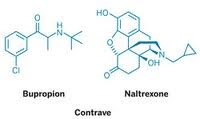What’s in an “*”?
That’s the FDA’s chosen method of identifying drugs that have an “active safety alert.” These asterisk’d entries can be found via an “easily accessible link” to the Index to Drug-Specific Information Web page. From there, “the public may access information about drugs that are the subject of a Public Health Advisory and/or an Alert regarding an important, and often emerging, drug safety issue, as well as established drug safety information.”
The asterisk is virtually the only new piece of information revealed in the recent “Guidance on Communication of Drug Safety Information” issued by the FDA (see the press release).
First of all, this is a far cry from the Drug Watch Site proposed by the FDA in 2005 (see “FDA Drug Watch Site Guidelines“).
Secondly, this is not an “easily accessible link” — at least not from FDA’s home page. On that page, I see a prominent link to “Recalls, Product Safety,” which does NOT concern “emerging” safety information, but full-blown safety disasters! For the consumer and health care professional this is like closing the barn door AFTER the cows have left!
Go ahead — try and find a link to the Index to Drug-Specific Information Web page on the FDA home page. I dare you! I also dare you to find a link there to the fabled MedWatch page, which is old wine that the FDA is recasting as new wine in this recent guidance. (The MedWatch link is there, but you’ll have to look carefully for it.)
FDA abandoned the Drug Watch name and site “due to potential confusion between the proposed Drug Watch and FDA’s existing MedWatch program…” FDA no longer plans to use the name Drug Watch to describe the Web page that contains drug safety information. Instead it will use “Index to Drug-Specific Information.”
OK, so now we’ve got an unwieldy URL, a forgettable name, and a “easily accessible” link that cannot be found. This is the new “transparency” that new FDA commish Dr. Andrew C. von Eschenbach is crowing about, albeit in a uncommunicative fashion according to Mark Senak over at Eye On FDA (see “Perception – Reality: The FDA and the Art of Communications“). Here’s what mark wrote:
“The [New Jersey Star Ledger] interviewer asked Dr. von Eschenbach whether or not the criticism of the FDA over the past few years has been justified. His response: ‘There is reality and then there’s perception. Sometimes in this town those two things get confused. The point is, it doesn’t matter. For me, if it is a perception, it is important….I want an agency in which people bring different points of view, divergent perspectives…At the end of the day, you make a decision.’
“Reality and perception aren’t the only things confused. What the heck does that mean? Does it mean anything?”
 Mark believes the FDA has a communications problem. He should know — that’s his business! I hope to talk about this during my podcast interview with Mark today at 1 PM Eastern time. For more about that, click here.
Mark believes the FDA has a communications problem. He should know — that’s his business! I hope to talk about this during my podcast interview with Mark today at 1 PM Eastern time. For more about that, click here.
If the head of FDA cannot even communicate a simple idea, how successful do you think the FDA will be in communicating the complicated emerging drug safety information to the public? They offer nothing innovative, just a rehash and reorganization — bad re-organization at that — of what they’ve been doing for years. And what they’ve been doing for years is inadequate — even according to the FDA!
One other small error in communication that I have found in the Guidance: an inaccurate URL for the MedWatch page. The Guidance directs us to “www.fda.gov/medwatch/safety” to find this page. Go ahead, click on it and see what you get.
FDA Confuses Perception with Reality
 The “perception” — in FDA’s head at least — is that it has achieved its “goal of issuing, in the first quarter of 2007, final guidance on communicating important drug safety information” (press release), but the “reality” is that it has done practically nothing to actually advance the communication of drug safety information to the public.
The “perception” — in FDA’s head at least — is that it has achieved its “goal of issuing, in the first quarter of 2007, final guidance on communicating important drug safety information” (press release), but the “reality” is that it has done practically nothing to actually advance the communication of drug safety information to the public.









![6 Digital Tools at the Center of Healthcare Digitalization [INFOGRAPHIC]](http://ec2-54-175-84-28.compute-1.amazonaws.com/pharma-mkting.com/wp-content/uploads/2021/04/6DigitalTools_600px-100x70.jpg)




